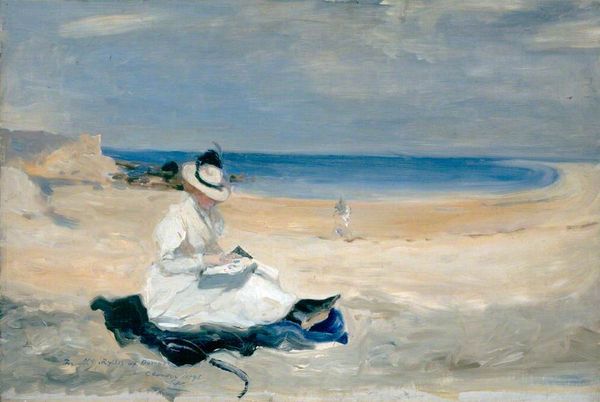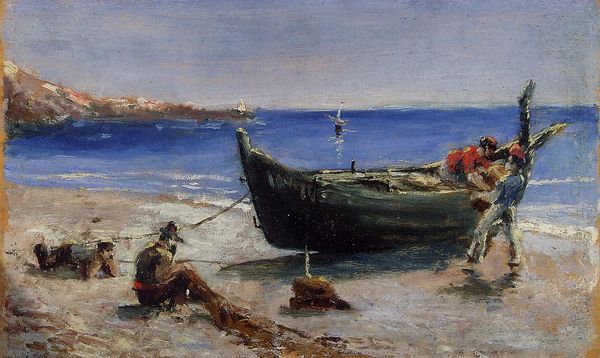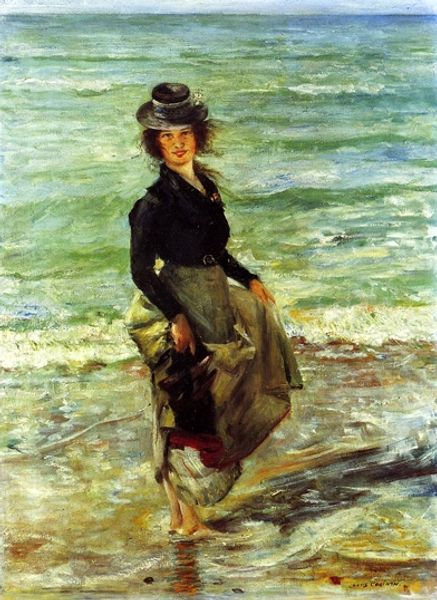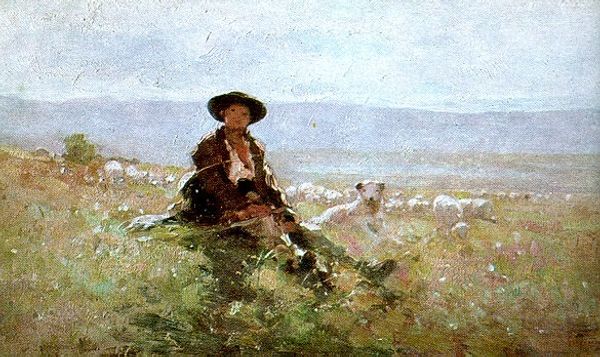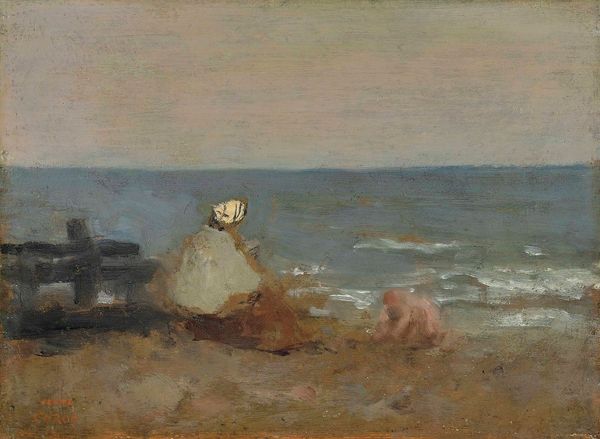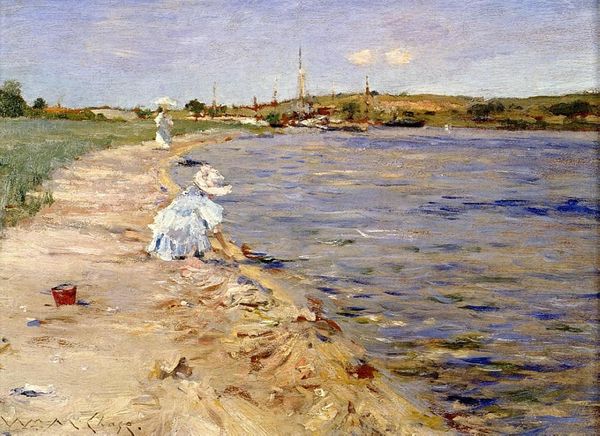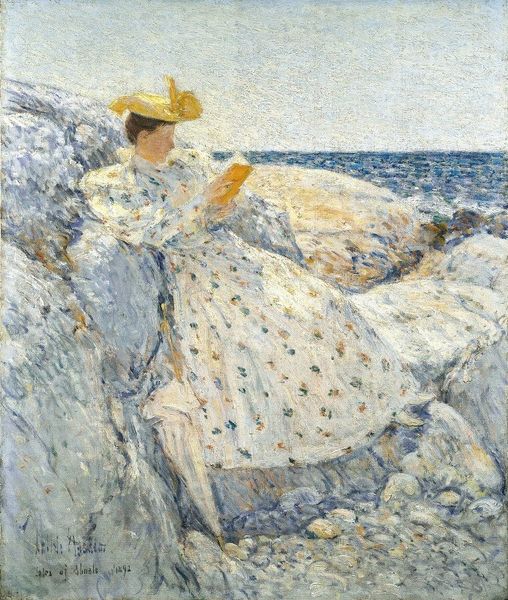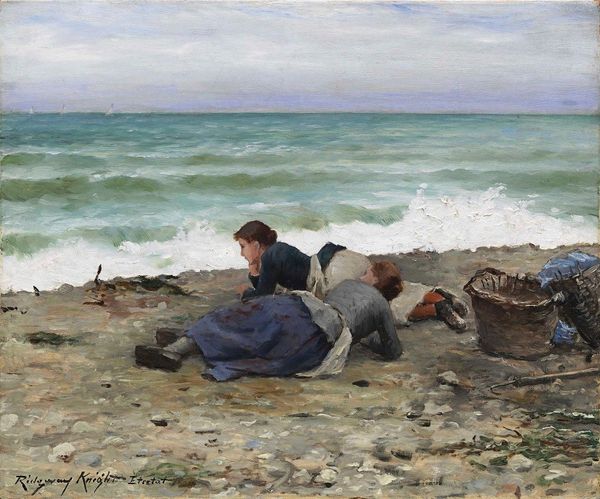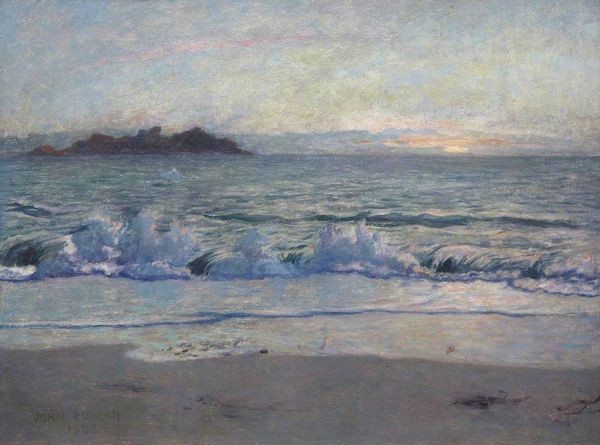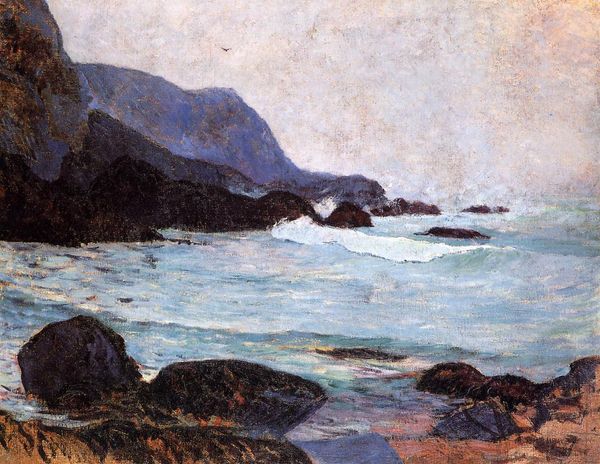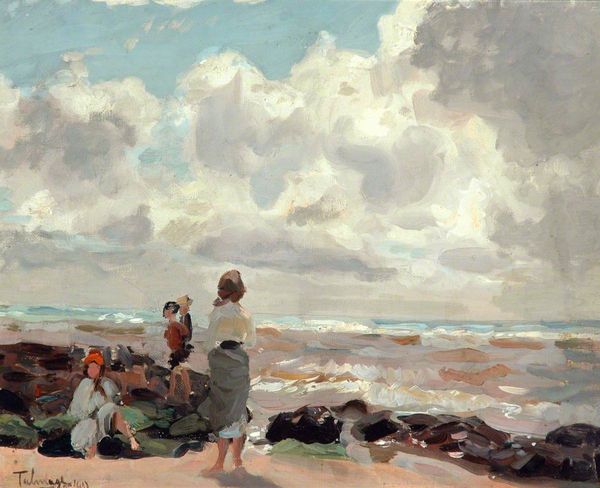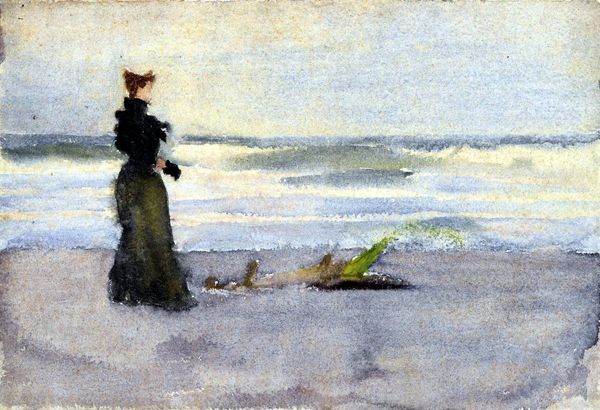
painting, plein-air, oil-paint
#
impressionistic
#
painting
#
impressionism
#
plein-air
#
oil-paint
#
landscape
#
genre-painting
#
mixed media
#
watercolor
Copyright: Public domain
Curator: Grigorescu's 1884 painting, "Fishermen in Grandville", strikes me with its incredible stillness, despite the active coastal scene it depicts. There's such a contemplative air. Editor: The thick brushstrokes definitely create a sense of motion, but I’m most interested in the textures. Look at the way the oil paint captures the roughness of the rocks against the relatively smoother finish of the figure’s clothing. You can almost feel the chill of the stone. Curator: That texture, that contrast is also evident in the cultural underpinnings here. Fishermen, often perceived as rugged figures representing hard work, are visually balanced by a solitary woman on the shores. It calls on our collective memory of the family ties that are essential to fishing economies. Editor: Exactly. The social structure is as crucial to understand as is the physical structure depicted. Think about the fishing industry in the 19th century; labor division was key, and domestic life tied closely to resource extraction. Did Grigorescu choose to depict these roles and why? I wonder about his relationship to these laborers. Curator: His rendering speaks to the symbolic weight of their shared endeavors. Her white cap and simple garments give her an almost ethereal quality; an invocation, a protective spirit maybe. Editor: That could be said of anyone in white at any time. I feel it speaks more to the practical—consider the cost and the cleaning of clothes on the coast, for example, or consider it just an economic signalifier. Curator: The muted palette lends itself well to that kind of interpretation; you see a convergence of earth tones mirroring a blending of human activity with natural rhythm. It is almost romantic. Editor: Agreed, the blend itself becomes symbolic, reflecting the interdependencies within that society and the processes of their survival. It encourages us to analyze beyond face value. Curator: Thinking about Grigorescu, he offers an eternal return to themes that resonate deep within. What looks, at first, like a genre painting blooms into a commentary about identity and the nature of things. Editor: Indeed; looking into this work with you really emphasizes for me that there’s always a dialogue happening between the artist’s hand, the materials at hand, and how they capture human activity and our collective cultural consciousness.
Comments
No comments
Be the first to comment and join the conversation on the ultimate creative platform.
